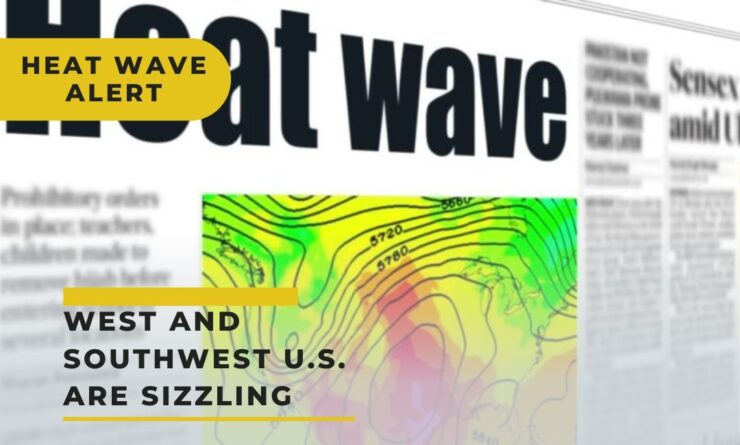Over the past weekend, an escalating heat wave swept across the Western United States, with millions of citizens bracing for record-setting temperatures.
Residents of the West Coast and Southwest may have to endure the sweltering heat for several more days, as heat advisories are projected to continue throughout the week.
Approximately one-third of the American population found themselves under severe heat warnings, watches, or advisories during the weekend, as reported by the National Weather Service. This was due to a persistent heat dome that initially covered Texas and subsequently extended to California, Nevada, and Arizona.
Public health officials nationwide are encouraging individuals to find cool refuge and to ensure the well-being of their neighbors.
Heat wave scorches millions across US southwest https://t.co/zvWaNfvtCg
— BBC News (World) (@BBCWorld) July 13, 2024
Residents of Las Vegas, accustomed to high temperatures, are being warned by meteorologists not to downplay the risks associated with the ongoing heat wave.
On Sunday, Las Vegas could potentially match its highest recorded temperature of 117 degrees Fahrenheit. The heat wave has already resulted in hospital admissions, with an emergency room doctor treating dehydrated tourists and an elderly resident who fainted due to keeping his thermostat at 80 degrees to save on electricity. Local health officials have recorded at least seven heat-related fatalities this year.
In nearby Death Valley, California, one of the planet’s hottest locations, the temperature hit 128 degrees on Sunday afternoon, breaking the daily record by one degree.
Phoenix experienced a sweltering 118 degrees on Saturday, surpassing the daily temperature record by one degree. The city is on track to break its longest recorded streak of 110-degree or higher heat, a record set in 1974, with forecasted temperatures expected to match or exceed record daily highs until at least Wednesday.
The heat has already claimed at least 12 lives in Phoenix this year.Maricopa County, where Phoenix is situated, houses around 200 cooling centers, hydration stations, and respite sites. Hondula suggested in a Friday interview with NBC’s Meet the Press that federal funding could help keep these centers better staffed and open longer.
Central and Southern states continue to grapple with dangerously high temperatures. A large portion of South Texas was under a heat advisory on Sunday, while the coastal region around Corpus Christi was under an excessive heat warning.
What’s behind this heat wave? A few factors are contributing to the increased temperatures. The recent onset of El Niño, a climate pattern characterized by warmer Pacific Ocean temperatures, is causing hotter weather globally.
El Niño, which aligns with the hottest years on record, intensifies the effects of climate change, including warmer temperatures, resulting from the combustion of fossil fuels and other greenhouse gas emissions that heat the planet.
Climate change can increase the frequency and intensity of heat domes — a phenomenon responsible for heat waves like this one. A heat dome happens when high atmospheric pressure traps hot ocean air from the sun, similar to a hot-air balloon.













